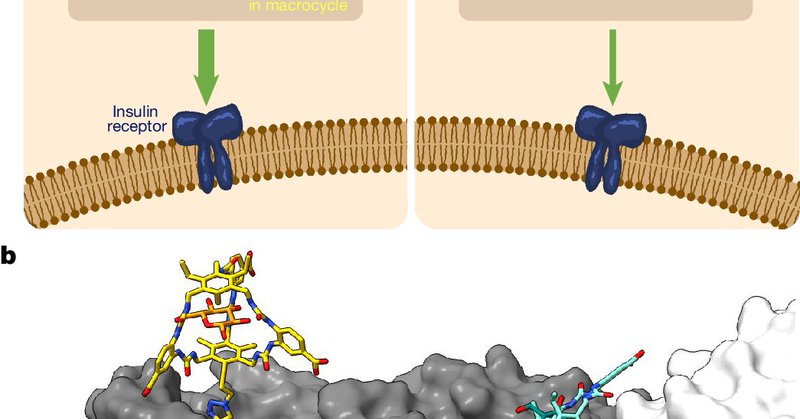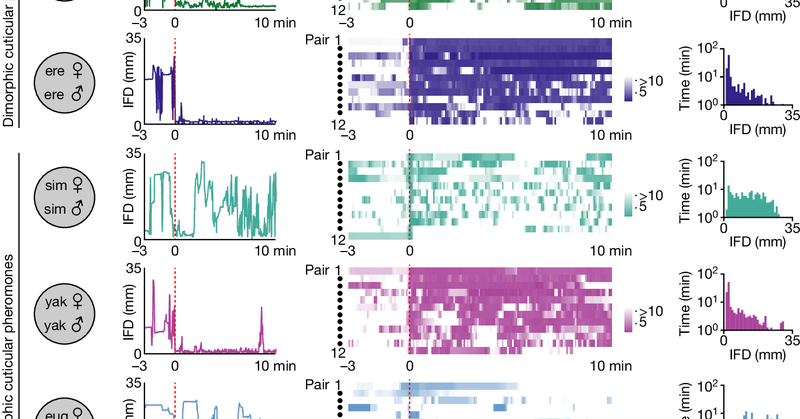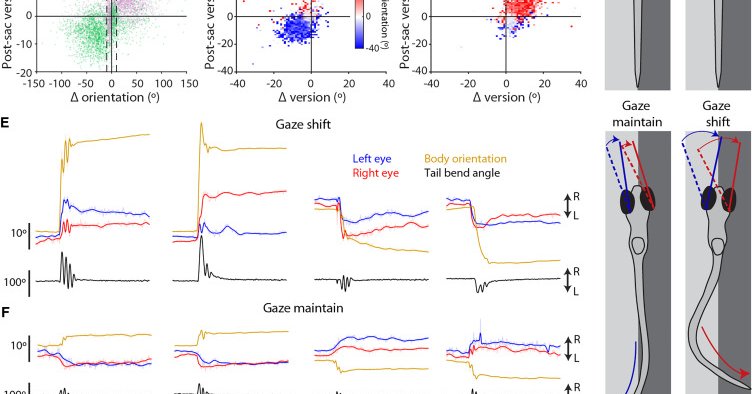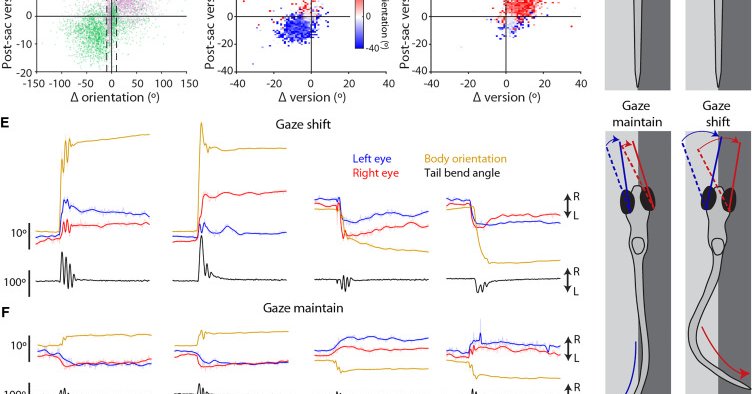
Charlie Dowell
@CharlieDowell4
Followers
118
Following
220
Media
28
Statuses
136
Postdoctoral associate at The Rockefeller University: https://t.co/NqXY7Yi70g PhD Neuroscience from UCL: https://t.co/U0ysLflyLE
Joined May 2019
I am delighted to share the main work from my PhD with @ibianco3. We used the saccadic eye movements of larval zebrafish to investigate fundamental mechanisms of motor control. https://t.co/Z2eItUJeyj
biorxiv.org
Animals construct diverse behavioural repertoires by moving a limited number of body parts with varied kinematics and patterns of coordination. There is evidence that distinct movements can be...
3
13
47
🚨🚨🚨Calling aspiring group leaders! We've just opened a new round of applications for group leader fellowship sponsorship to start a lab in UCL NPP. Deadline 5 Jan #sciencejobs @uclnpp
0
12
22
One of my favorite papers of the year is out today! The Ruta group very elegantly show how modular neural circuits can enable rapid evolution of mate recognition. Cool time for evolution of circuits and behavior! https://t.co/hnO125Jotg
nature.com
Nature - Peripheral and central circuit adaptations can be flexibly coordinated in Drosophila, and such a modular circuit organization may facilitate the evolution of mate recognition systems by...
0
15
67
Kinematically distinct saccades are used in a context-dependent manner by larval zebrafish: Current Biology
cell.com
Dowell et al. characterize the repertoire of saccadic eye movements of larval zebrafish and examine their coordination with swims during visuomotor behaviors. Differences in timing, kinematics, and...
0
7
13
My work charactising the saccadic repertoire of larval zebrafish with @ibianco3 is now at @CurrentBiology:
cell.com
Dowell et al. characterize the repertoire of saccadic eye movements of larval zebrafish and examine their coordination with swims during visuomotor behaviors. Differences in timing, kinematics, and...
I am very pleased to share the first preprint from my PhD. https://t.co/AoaNfAXWOk
3
7
22
Personally, this work has shown me the beauty and complexity of neural circuits underpinning even the simplest movements, making our day-to-day feats of boiling the kettle or scrolling Twitter seem all the more remarkable - let alone what Simone Biles can do.
1
0
3
Combined we identify a mechanism by which kinematically and ethologically distinct movements are made by the recruitment of different motoneuron subpopulations, in turn differentially controlled by parallel action-specific and generalist premotor pathways.
1
0
2
Using functional imaging, ultrastructural reconstructions, optogenetics and ablations we traced saccade-type agnostic and convergent saccade specific circuits to distinct dorso/ventral portions of hindbrain rhombomere 5/6 - a known oculomotor premotor region.
1
0
1
This included regions selective for hunting. Below is a connection between an AF7 hunting command neuron and type Y MN.
1
0
0
The type Y motoneurons by contrast overlapped topographically with motoneurons especially active for convergent saccades, receiving input from diverse sources on their Y shaped dendrites.
1
0
2
Sidebar: To our knowledge this giant synapse motif has not been described before. Further EM data we collected identified sites of multiple neurotransmitter release, making it somewhat equivalent to the calyx of Held.
1
0
0
The giant synapse neurons were fascinating. Topographically they overlapped with motoneurons neurons agnostic to saccade type. Anatomically, they received almost all of their input via a single giant synapse from neurons that were also saccade-type agnostic (abducens INNs -red)
1
0
1
This functional topography was mirrored by the distribution of three anatomically distinct motoneuron types we call, type Y (blue), type X (green) and giant synapse (yellow).
1
0
1
These neurons could be decomposed into populations with activity agnostic to saccade type (yellow) and especially active for convergent saccades (blue).
1
0
1
When we imaged the activity of motoneurons in oculomotor nucleus (nIII), we found distinct recruitment topographies for each saccade type.
1
0
1
This observation was really cool, as it provided a simple test system to compare how two very similar and relatively simple movements are controlled - specifically the inwards (nasal) rotation of the eye during convergent and conjugate saccades.
1
0
1
In prior work we identified distinct kinematic differences between two types of saccadic eye movement in larval zebrafish made during hunting (convergent) and exploration (conjugate). More details in this preprint here (soon to be published): https://t.co/AoaNfAXWOk
1
0
1
Underpinning all this is the contraction of muscles, which are in turn controlled by precise patterns of motoneuron activity. For even the simplest movements however, we have an incomplete understanding of how these motoneuron activity patterns are established.
1
0
0
In the course of our lives we move our body parts in extraordinary ways to interact with each other and the environment. Some more extraordinary than others.
1
0
1


















